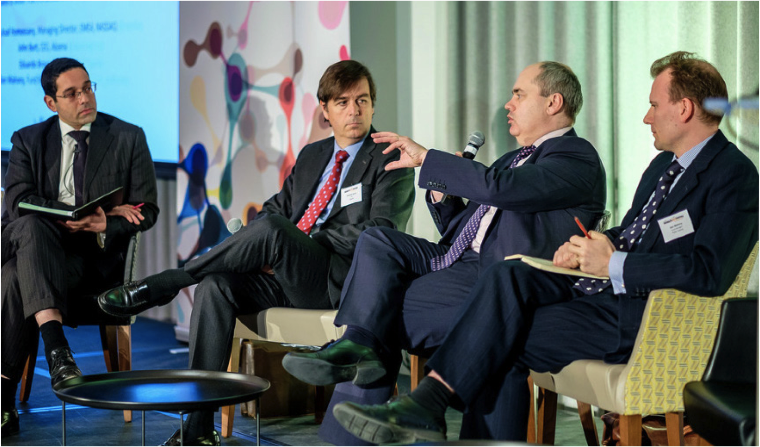Life science approaches to public markets: AIM, Nasdaq and Euronext
Quality sites
- Online Casinos UK
- Casino Non Aams
- Casinos Not On Gamstop
- UK Casinos Not On Gamstop
- Best UK Casinos Not On Gamstop
- Casino Sites Not On Gamstop
- Meilleur Casino En Ligne Live
- Casino Sites Not On Gamstop
- Casino Sites Not On Gamstop
- Non Gamstop Casino Sites UK
- Non Gamstop Casinos
- Best Online Casino Canada
- Casino Sites Not On Gamstop
- Non Gamstop Casino UK
- UK Online Casinos Not On Gamstop
- Best Slot Sites 2025
- Casinos Not On Gamstop
- Meilleur Casino En Ligne
- Non Gamstop Casinos
- Slots Not On Gamstop
- Non Gamstop Casino
- New Online Casinos Not Registered With Gamstop
- Casino Non Aams Sicuri
- Casino Sites UK Not On Gamstop
- Casino Non Aams Italia
- Bitcoin Casino
- Meilleur Site Casino En Ligne Belgique
- Casino App
- Migliori Siti Scommesse Non Aams
- Meilleur Casino En Ligne De France
- Nouveau Jeu Casino En Ligne
The following transcript comes from Approaches to public markets: AIM, Nasdaq and Euronext, a group discussion at February’s Biotech and Money London 2015 congress.
Chairman and Panelists:
Asaf Homossany, Managing Director, EMEA, Nasdaq (AH), Eduardo Bravo, CEO, Tigenix, (EB) John Burt, CEO, Abzena (JB) and Dan Mahoney, Fund Manager, Polar Capital (DH)
Talking Points:
The current appetite for IPOs, Choosing one exchange over another, Educating investors and engagement, Running a public company versus a private one
AH: If you look at the number of IPO’s in the US we saw 305 companies going public in the US. 114 of them were life sciences. They realised 9.3 billion US dollars. The NASDAQ biotech index has done extremely well. We’ve seen lots of activity on the LSE as we’ve heard. However, do you think we’re in a bubble?
DM: Personally I don’t think we’re in a bubble. I think what’s different this time is when you think about the whole tech bubble and biotech bubble in the late ‘90’s, it was really driven by concepts. Genomics was going to solve everything and we were suddenly going to be able to go from gene to drug in a matter of days it seems. Clearly that wasn’t possible, although the market myopically thought it was.
If you look at the companies that are listing now, I think they’re listing on their own merits. So if you look at say 50 biotech companies listed in the last 3-6 months, if one of them fails it doesn’t really have a correlation to any others. Because one might have a cancer drug, one might have a drug for a rare disease etc. So I think these companies stand on their own merits.
I think the other thing to think about is that the market cap for the sector now in the US is about 800 billion dollars. We had about 114 IPO’s over the last 2 years, so let’s say that’s an average raise of 70 million dollars, you’re looking at 7 or 8 billion dollars a year, that’s 1% of the industry market cap. It sounds like a lot of money, but in the grand scheme of things, maybe this isn’t an IPO window at all. Maybe we’ve actually gone to a state of normality.
But I think that’s for the US. I think we still have windows over here. But I think that I would argue that this idea of windows opening and closing is probably dissipating in the US to some degree.
AH: The sector itself can be very cyclical, but do you think this is smoothing out because people get more understanding of the sector, the sub sector, and the specific companies going out? Maybe we see more quality companies managing to go public?
DM: I think it is smoothing out to some degree and I think there’s a number of things that figure into that. You’ve got scientific innovation cycles, business cycles, scientific innovation cycles are obviously a lot longer. Also you have to remember the sector is only really about 30-35 years old.
I think what you’ve got is a sector that is growing up, it is maturing. The other thing is a structural change in the industry is that 15-18 years ago it was pretty much a big call to have a small company actually take a drug to market and sell it. What you’re seeing is more companies getting to maturity. So I think the sector is maturing in that effect.
AH: John you took your company public last year on AIM. A very successful IPO raising 20 million pounds, can you tell us through the process of the thinking process behind choosing to go public and float on AIM rather than raising that money which ultimately it’s not a large sum from private investors or strategic investors?
JB: Certainly, so if you can look back from where we are today as Abzena as a public company from the component part of the group. There are 3 businesses that have come together in the Abzena group over the course of the last 4 years. Polytherics, Warwick Effect Polymers and Antitope.
We took those businesses together and created the Abzena group, and it’s a trajectory through acquisition, financing and growth. The next step in that evolution was the IPO. Given our business model, the scale we’re at and our operations all being in the UK, we recognised very quickly that AIM was the market for us. Well looking at where we are today, it wouldn’t have been appropriate for us to go to the main market. Although like Horizon the majority of our business is international and the majority of our customers are in North America, our operations are here in the UK. So it wouldn’t have been appropriate to really think of NASDAQ as the market to come to as our IPO.
AH: So with your business model you found the UK investorsknowledgeable and sophisticated enough to value you at the right point?
JB: When we put together and merged Polytherics and Antitope in July 2013 we’d had the long term support of Imperial Innovation. We got Invesco on board in a private financing round. So we’d educated Invesco about our business model and the strategy for growth in terms of combining those complementary technologies and services focussed on biologic, so we’d been through that education process with a major investor. We’d got their participation and support. We carried that through the IPO process.
So we’d started the education process for key investors as a private company and carried that relationship through to where we sit today as a public company.
AH: Looking back would you have done anything differently throughout the process? Because we heard about the process that Horizon went through, so just getting your perspective on that.
JB: I think there’s an interesting contrast in terms of the breadth of the investor base that Horizon came to the market with and us. You know 3 cornerstone investors in our business, Invesco, Woodford and Imperial Innovation who hold about 60% of the stock. I think the transition that we’d gone through from Polytherics as a private company to Abzena as a public group required the support of those cornerstone investors to manage that growth and evolution, to establish the critical mass and now obviously the key objective is to broaden that shareholder base.
So in an ideal world you have a broader shareholder base, but you’ve actually got to have the support of your investors that will carry you through it. So it’s a journey we’re on, not a completed story.
AH: Eduardo you’ve been running a public company which IPO’d in 2007. Can you share with us some of the lessons learned and what it actually means to run a public company versus a private company from a CEO perspective?
EB: The company went public in 2007 at 5 euros a share. We hit a low in 2013 at 18 cents a share. We didn’t get FDA approval and the stock tanked. We had troubles to raise capital. Then retail investors, which in Belgium are very important, started dropping the shares. Suddenly you start going down a cent a day, which goes very quickly by the way. Then suddenly we were worth 25 million Euros. Amazingly enough 4 months later we’re worth 160 million. So sometimes you can just not look at your share price or your market cap, and you need to forget about the share price, which I keep looking at least 5 times a day, and run the company with the fundamentals and that I think would be the best lesson that I can share.
AH: But you have managed to diversify your investor base throughout the years? So some of the investors are Europeans, some are American, do you have any insights into the differences between those types of investors?
EB: I think that we have 3 types of investors. We have what I would call institutional investors, which are a specialised and come mainly from the US. Then we have some generalist investors, mainly from Europe. Then we have quite a large portion of our shareholder base is Belgium retail investors, which is very typical in Belgium. They are much more knowledgeable than the generalist investors. They are in between generalist and specialised and they read everything, and I can tell you following the blogs of those investors is good, it’s interesting. So you need to adapt your message and you need to adapt your strategy. I think we didn’t do enough in 2011 when we merged the two companies to really change the perception of the retail investors. Again it’s easy to underestimate the amount of effort and communication and money to change the perception on a company, especially by retail investors. Institutional investors I think they get used to the new story, they change up or down or they like the new story or not. But retail investors you just need to go there 100 times and they need to listen to the news story or new idea a lot before they actually start changing their approach. We didn’t change enough.
AH: When we talk to companies trying to go public, one of the key points we try to make is that once you go public you start selling your shares just like you’re selling your product. So you must have a marketing strategy or investor relations strategy which you follow on a regular basis and communicate your story to the market.
So Dan, when you look at the US market and European market, do you see a difference in the understanding from the investor perspective and the way they understand and analyse and they support the companies? We do see difference in the liquidity between the US and Europe in the sector. We do see differences in the PE multiples when a company makes money, but valuations are higher in the US. Why is that? Is money really flowing globally?
DM: A lot of people think that the US is a panacea, and that going over to float on NASDAQ is going to be a crock of gold sitting there and you just go and scoop it up. I think one of the problems that we’re beginning to see, which actually is an opportunity for us as investors, is we’re beginning to see IPO orphans. The US is a very competitive market, so if you’ve had 115 IPO’s what tends to happen is that the sell side the banks, if you’ve been a so so performer, they’ll quietly drop coverage of you because there’s a next new thing that is going to come onto the market. So we’re seeing sort of 10-20-30 in our companies that have essentially become orphans in the market. And if you’ve got a market cap of 300/350 million dollars, which seems a lot on the UK, you’re in there with another 1,000 companies, and it’s very difficult to get any visibility.
The advantage of the UK is someone like Horizon has a lot of visibility. You may not have a lot of people who can actually invest in you, but at least you can get out there and communicate. I think there are two big differences I see in investors. I used to broker. I was on the sell side in the states and I’ve been on the sell side over here.
In the States I think investors tend to invest in people. Over here, investors tend to invest in assets. So if you’re a biotech company, and we now see virtual biotech companies that don’t even have bricks and mortar. Some people struggle to get past that. A patent is a piece of paper. It’s actually a really valuable piece of paper, but some people struggle with that. In the US what you find is there’s a lot of talk about how investors in the US are so much better educated, I’m not sure if that’s necessarily true. But what they do do is they get really good recycling of management teams. So you get the same people appearing again and again. You walk through the door, and I don’t really care what the idea is, there’s 10 million bucks, now tell me what the idea is, because you invest in the people. That’s a big difference.
What I see in terms of company behaviour, and again this comes down to opportunity, is if I want to see a particular health care company every 3 weeks, I could probably go to a conference in the Atates and see the company, CEO, CFO, someone from the senior management team, probably every 3 weeks. Because there’s a lot of opportunity, a lot of platforms. Harder if you’re a smaller company, but if you’re say a billion, 2 billion dollar company, you have a lot of opportunity to interact with investors. What I find over here, the UK is as guilty as Europe, people disappear. People, companies see IPO as push that rock up the hill, you’ve got money in. Then you might not see them until results next year. I think there’s an opportunity that a lot of companies are missing, in terms of continuing to communicate their story. Because someone who doesn’t buy at IPO or doesn’t even buy on the third or fourth meeting you have with them, may come into that fund raising when you’re going to need to raise 50/100 million quid 2 years down the road.
So the point about having the communications strategy, I think you need to think longer term. It’s not just about today’s investors, it’s next year and the year after investor, particularly in an area like biotech where your need for capital. There are very few companies that raise enough capital in one go to see them all the way through for sustainability and break even, no matter what people tell you. That’s our rule of thumb anyway.
AH: John and Eduardo, how do you communicate to the market, again you have every different investor bases, very different business models. So can you share with the audience how do you manage your investor activity as a public company?
JB: You have to recognise there are multiple channels to the investors, and there are also your existing investors and staying close to your existing investors and potential investors and staying close in communicating the story to them.
Take the point Dan makes, perception in the US of investment is more management than assets as in the UK. But still you want to have that rapport with your investors. By way of example when I go and meet with Neil Woodford it’s a conversation, it’s not a pitch. You turn the pages but actually it’s a conversation about the business, a very positive and enlightening conversation one has.
So you’ve got to have that personal interaction, have the meetings. There is the use of the analysts, using your house broker. N+1Singer started covering us today, so it’s broadening the analyst coverage of the company. That’s hard work, getting that coverage, but as you get that coverage it broadens the exposure and follow up to investors.
Then it’s the news flow, and having the appropriate level of news flow and ensuring that is pushed through the IR channels to those investors to then follow up, so there’s been some awareness of the company and the progress the company has made when you go in. So you can talk about progress being made through evidence of the news flow, and the future of what is coming. So it’s picking those channels, the news flow channel, the analyst channel, the broker channel and the direct meetings. Ultimately it’s engaging the mind of the investors across that broad base.
EB: Not much to add apart from general PR and communication to reach retail investors. Which again are very particular. But again you cannot underestimate the work and amount of times you need to go to the US, and visit investors every quarter or every 2 months. Just to make sure that you’re being heard, becoming familiar and you are showing them that you’ve done exactly what you told them you’d be doing.
Additional group discussions from the event, plus interviews, insights and articles, can be found in the latest edition of our Drugs & Dealers magazine.






Leave a comment